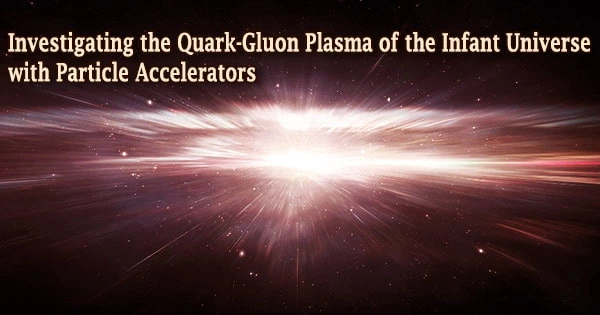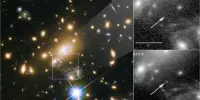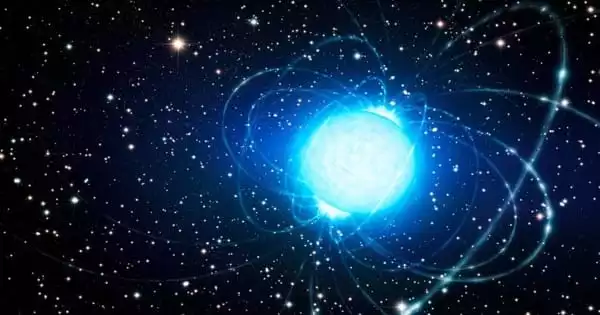Scientists believe that the structure of the Universe, which we see as galaxies and clusters of galaxies, is the result of microscopic energy fluctuations that occurred in the first fraction of a second of the Universe’s long existence. They also believe that a period of sudden and exponential expansion known as inflation greatly enhanced the amount of those quantum fluctuations.
Quarks and gluons were swiftly limited to protons and neutrons in the early phases of the Universe, forming atoms. The potential to explore this transient primeval condition of matter has finally arrived, thanks to particle accelerators reaching exponentially greater energy levels.
The quark-gluon plasma (QGP) is an interacting confined assembly of quarks and gluons that is in thermal (local kinetic) and chemical (abundance) equilibrium. The word plasma denotes the presence of unrestricted color charges.
Quark-Gluon Plasma is a state of matter that only existed for a fraction of a second at the very beginning of the Universe, before being swiftly clumped together to form the protons and neutrons that make up the everyday matter that surrounds us.
QGP can be defined as a new phase of strongly interacting matter that expresses its physical features in the form of almost massless gluons and quarks with nearly free dynamics. Physicists operating the world’s most powerful particle accelerators are tasked with deciphering this primal condition of matter.
A new special edition of EPJ ST entitled ‘Quark-Gluon Plasma and Heavy-Ion Phenomenology’ (https://link.springer.com/journal/11734/volumes-and-issues/230-3), edited by Munshi G. Mustafa, Saha Institute of Nuclear Physics, Kolkata, India, brings together seven papers that detail our understanding of QGP and the processes that transformed it into the baryonic matter around us on an everyday basis.
Before the matter was born, the Universe was filled with quark-gluon plasma. In the late 1970s and early 1980s, theories predicting the presence of quark-gluon plasma were created. In the year 2000, QGP was discovered for the first time in a laboratory at CERN.
Quark-Gluon Plasma is the strongly interacting deconfined matter which existed only briefly in the early universe, a few microseconds after the Big Bang. The discovery and characterization of the properties of QGP remain some of the best orchestrated international efforts in modern nuclear physics.
Munshi G. Mustafa
While there are numerous models of inflation, they all predict that these density fluctuations developed into the large-scale structures we observe in the Universe today, such as galaxies, clusters of galaxies, and even larger-scale webs of galaxies, due to the impact of gravity.
“Quark-Gluon Plasma is the strongly interacting deconfined matter which existed only briefly in the early universe, a few microseconds after the Big Bang,” says Mustafa. “The discovery and characterization of the properties of QGP remain some of the best orchestrated international efforts in modern nuclear physics.”
Heavy Ion Phenomenology, according to Mustafa, is a very trustworthy instrument for determining the properties of QGP, particularly the dynamics of its evolution and cooling.
Improvements at colliders like the Relativistic Heavy Ion Collider (RHIC) and the Large Hadron Collider (LHC) have dramatically raised the energy levels that heavy nuclei collisions can achieve at near-light speeds, bringing them in line with those of the infant Universe.
Future investigations at the Facility for Antiproton and Ion Research (FAIR) and the Nuclotron-based Ion Collider Facility (NICA) will also yield a wealth of data on QGP and the early Universe conditions.
“This collection is so timely as it calls for a better theoretical understanding of particle properties of hot and dense deconfined matter, which reflect both static and dynamical properties of QGP,” explains Mustafa.
“This improved theoretical understanding of Quark-Gluon Plasma and Heavy Ion Phenomenology is essential for uncovering the properties of the putative QGP which occupied the entire universe, a few microseconds after Big Bang.”
The study of the QGP also serves as a test bed for finite temperature field theory, an area of theoretical physics aimed at understanding particle physics under extreme temperatures.
Such research is critical for understanding the early stages of our universe’s evolution: the first hundred microseconds or so.
Mustafa points out that a better understanding of the equation of the state of this strongly interacting matter will pave the way for further research into the theory of quark-hadron transition and the possibility of thermalisation of the QGP. This could lead to a better understanding of the steps that led from QGP to the baryonic matter we see every day.
“The quarks and gluons which formed the neutrons and protons were confined into them, a few microseconds after the Big Bang,” concludes Mustafa. “This is the first time when we have seen them being liberated from their eternal confinement!”
















